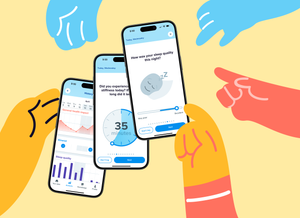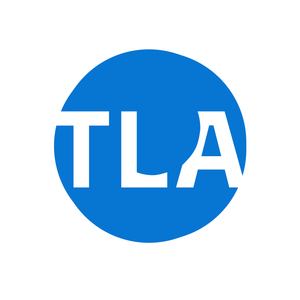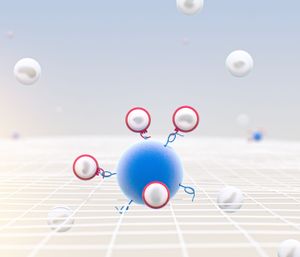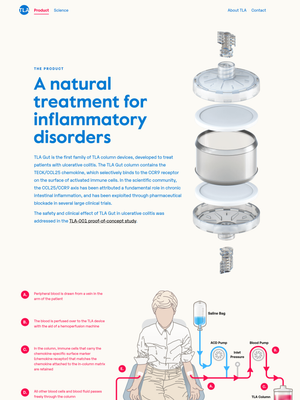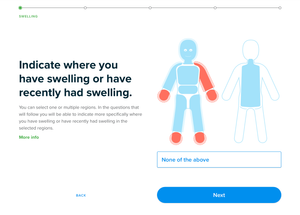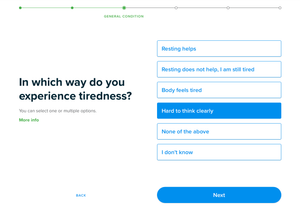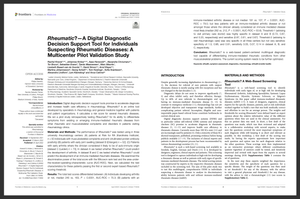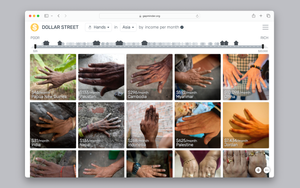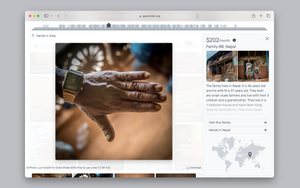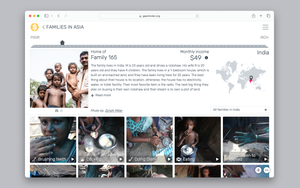Tor Bruce
Design & code
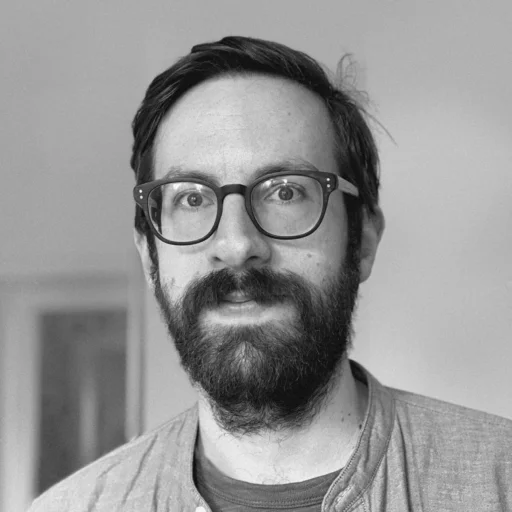
Hi, I like to design and code user interfaces. That’s “and” as in the middle piece of a Venn diagram. Too much code and no design and I lose motivation. Too much design and no code and I get impatient.
As a designer, I try to tackle problems through systems. I’ll look for underlying concepts or patterns of rules that can get me 80% of the way from the start, rather than treat everything as a mystery box of unrelated edge cases to handle one at a time. You could say that I prefer “simple” over “easy”.
Work
I’ve often been lucky to work on projects that felt meaningful and, while not necessarily the most glamorous or cutting-edge, made some positive difference in the world.
Not every project lends itself to a visually striking product shot, but I really enjoy working on surface-level polish too. I feel like that’s a strength of being a designer/developer – working through the details of all the little states, transitions, and micro-interactions, directly in a dynamic medium. You can’t do that in a drawing.
Projects
- 2020—’24
Elsa
Elsa helps people with RA (rheumatoid arthritis) understand their condition and influence their care, so they can feel better. You can track symptoms, medications, and other health parameters relevant to RA, discover trends and progress over time, and equip yourself with the knowledge most helpful to your situation. By connecting to a clinic you can let your rheumatologist follow how you're doing. The app is beloved by its users, rated 4.8/5 on the Swedish App Store.
While at Ocean, I worked on some of the first concepts for what would eventually become Elsa. I've since contributed to user research, design, usability testing, production code for React Native, QA testing, promotional materials, and much more.
- 2020
Branding at TLA
I drew the logotype and built the website. In collaboration with Ocean colleagues, I art directed the scientific illustrations and diagrams.
- 2018—’23
Rheumatic? at Elsa & Ocean
An early diagnosis can reduce the health effects of a rheumatic condition. With rheumatologists from the medical universities of Karolinska Institute, Leiden, Erlangen, and Birmingham, we made a tool to find people in the early stages of rheumatic disease, or at risk of developing it.
I worked on user experience and interaction design. I also built the whole first version for the web, including the algorithm and implementation of the risk calculation itself (later refined and evaluated through several research papers). We collaborated with world-leading medical experts to fine-tune the parameters of this calculation, based on user input.
- 2016—’17
Hurmårdu.nu at County Council of Värmland
Letting troubled young people seek help on their own terms, and build courage for a first mental health counseling meeting. Made at Ocean, in collaboration with Första Linjen, Experio Lab, and local kids and teenagers. The project was nominated for Design S – Swedish Design Awards, and won the Psynk award, Vitalis award, as well as Dagens Medicin's Guldskalpellen.
- 2016
Dollar Street at Gapminder
I helped Hans Rosling’s Gapminder with information architecture and UX for the initial launch of their ambitious photojournalism project Dollar Street. Scenes and objects from homes all around the world have been captured in over 30 000 photos and videos, bringing to life how income differences affect people’s everyday life.
I designed improved search and navigation, to make it easier to browse the huge catalog of images. Together with colleagues from Ocean I interviewed users, made an onboarding, revised the graphic design, and improved the usability of the photographers’ admin interface.
Bill Gates was “obsessed” with Dollar Street, and called the user interface simple and intuitive to use (actually, he said the “user interference” was simple and intuitive to use, so it might have been intended as a backhanded compliment).
Work experience
- 2020—’24
Design technologist at Elsa
My work has spanned all areas of design and development across multiple products, from early concept work, UX research, design, prototyping in code, and shipping production code for web, iOS and Android.
- 2014—’20
Interaction designer at Ocean (formerly Ocean Observations)
My role included interaction design, UX, client workshops, front-end code and more in a range of projects at this pioneering Swedish service design agency.
Clients and project partners I worked with included Gapminder, Karolinska Institute, Shire, Sanofi, Thermo Fisher, Aisin, Kry, Axfoundation, 1177 Vårdguiden (Sweden’s healthcare guide service), Elsa, Coupa, Mödrahälsovårdsenheten Stockholm (maternal care unit), and Ung Cancer (Swedish young cancer association).
- 2013—’14
Interaction designer at Lexicon Interactive
Design and code for digital learning platforms.
- 2011—’13
Freelance design work
Interaction design and front-end web development projects.
- 2008—’10
Writer at Studio magazine
Gear reviews, interviews, music production tutorials and more for Sweden’s largest musicians’ magazine.
- 2004—’08
Music producer
Songwriting, production, recording, remixing, performing, and more. Björk once put a track I made on a record.
Education
- 2011—’14
Bachelor’s programme in Interaction design at Stockholm University
- 2007—’09
Music production at Linnaeus University
Design things I do well
Interaction design.
I got into this field because of my fascination with the infinite malleability of software as a material. Since every property and behavior has to be designed, it requires an attention to detail that I enjoy.
Design systems.
I design flexible, accessible UI components, trying to balance the product’s need for tailoring and the brand’s need for differentiation with the user’s need for familiarity.
Visual design.
I’ve created logos, icons, illustrations, and data visualizations. While I’ve often collaborated with dedicated graphic designers, I don’t shy away from tackling these tasks on my own.
Design process facilitation.
I have years of experience running workshops, interviewing users, shaping and pitching concepts, performing usability testing, and conducting UX research.
Typography.
I have a life-long interest in type. I’m intrigued by its expressive power in guiding attention, establishing a voice, creating contrast and hierarchy, building a brand, or simply shaping aesthetics.
Writing.
With my background as a writer, copy is something I put a lot of care into. The right handful of words in the right place often makes the difference between a hesitant and a confident user experience.
Code things I do well
Design engineering.
Design and code are inseparable in my craft. After all, software is the material I’m designing for. Letting these two disciplines merge can often lead to higher quality with less work.
Front-end web.
The browser platform is like a second home to me. I wrote my first DOM manipulation code before jQuery. I care about making web apps and sites that are good, accessible web citizens.
Prototyping in code.
Exploring the design space in code is my favorite design method. Half a day on a prototype implementation of a design often leads me to insights I could never have in a static mockup.
Graphics and visualizations.
I know my way around b-splines, color spaces, canvas APIs, and SVG, and how to use them in original, high-quality, performant interactive graphics and data visualizations.
Gestures and motion.
I’ve designed and implemented complex, multi-stage gestures. I know how springs and easing functions can be used to get fluid animations and responsive input feedback.
Programming.
While I got into programming because I wanted to build user interfaces, my interest in the topic has grown much deeper. I’ve built parsers, custom FRP implementations, and physics simulations.
